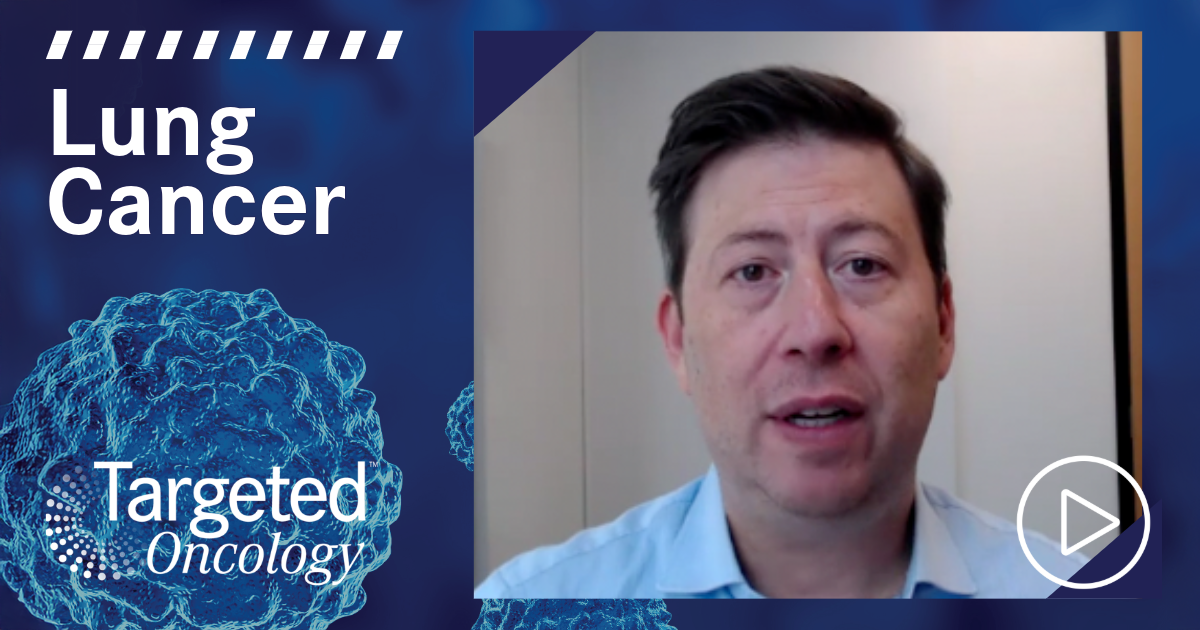In an interview with Targeted Oncology, Jacob Sands, MD, medical oncologist at Dana-Farber Cancer Institute, discusses the integration of datopotamab deruxtecan (Dato-DXd; Datroway) into the treatment landscape for EGFR-mutant non–small cell lung cancer (NSCLC).
The recent FDA approval of Dato-DXdoffers a new therapeutic avenue for patients with EGFR-sensitizing mutations in their tumors who have previously received an EGFR-directed therapy and chemotherapy. This expands the treatment landscape for a subset of patients with NSCLC, providing an additional option for those who have progressed on earlier lines of treatment.
The field of EGFR-mutated NSCLC has become increasingly intricate, with multiple established and emerging pathways for treatment. In the first-line setting, osimertinib (Tagrisso) has long been a cornerstone, administered as a single agent and generally very well tolerated. Many patients experience remarkable durability of response with osimertinib monotherapy, offering a significant period of disease control.
However, the treatment paradigm has evolved further with the introduction of combination regimens demonstrating superior efficacy compared to osimertinib alone. One notable regimen is the combination of chemotherapy plus osimertinib, commonly utilizing carboplatin and pemetrexed in conjunction with osimertinib. This combination, often referred to as the FLAURA2 regimen, has shown enhanced progression-free survival benefits.
Another significant first-line option is the MARIPOSA regimen, which combines amivantamab (Rybrevant) with lazertinib (Lazcluze). This represents a distinct approach, targeting EGFR and MET pathways simultaneously. The choice between these first-line regimens carries significant implications for subsequent lines of therapy, necessitating careful consideration in shared decision-making with patients.
The sequence of therapies postprogression is highly dependent on the initial first-line treatment. If a patient initially receives amivantamab plus lazertinib and then progresses, the subsequent line of therapy would typically involve chemotherapy.
Conversely, for patients who initially receive osimertinib plus chemotherapy and subsequently progress, several options exist. One such option, now reinforced by the recent FDA approval, is Dato-DXd.
For patients who commence treatment with osimertinib alone and then progress, the next line of therapy could be chemotherapy or the MARIPOSA-2 regimen, which combines amivantamab with chemotherapy. Following progression on either of these options, Dato-DXd then becomes a viable treatment option.
The rapid advancements in the treatment of EGFR-mutated NSCLC have resulted in a diverse array of therapeutic choices that can be strategically integrated into a patient’s treatment journey. This expanded toolkit offers personalized approaches but simultaneously introduces greater complexity into clinical decision-making, particularly regarding the optimal first-line therapy, as this choice directly influences the sequence of subsequent treatments and overall patient outcomes. The increased complexity underscores the importance of multidisciplinary tumor boards and expert consultation to navigate these intricate treatment pathways effectively.
